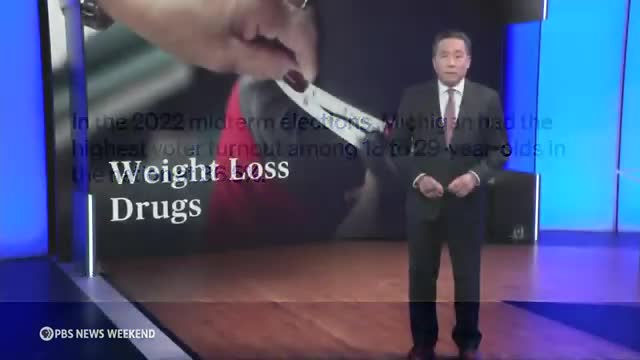Surge in youth using weight loss drugs raises health concerns
This article was created by AI summarizing key points discussed. AI makes mistakes, so for full details and context, please refer to the video of the full meeting. Please report any errors so we can fix them. Report an error »

Physicians are increasingly prescribing weight loss medications to address obesity and related chronic conditions in young people, including children. Over the past three years, the use of drugs like Wegovy and Ozempic among individuals aged 12 to 25 has surged by nearly 600%. This trend comes amid rising obesity rates, with approximately one in five children and adolescents in the U.S. classified as obese. Experts advocate for early intervention, emphasizing that intensive treatment can mitigate future health complications.
The American Academy of Pediatrics endorsed the use of medication for treating obesity in children aged 12 and older last year. Young patients, like Sophie and Autumn, have shared their positive experiences with these medications, reporting significant weight loss and improvements in health conditions such as polycystic ovary syndrome (PCOS). They noted that traditional methods like diet and exercise had not yielded results, highlighting the effectiveness of medication in managing their weight and overall health.
Despite the promising outcomes, medical professionals express concerns regarding the long-term safety of these drugs in children. Dr. Melanie Kree, a pediatric endocrinologist, explained that while these medications can effectively aid weight loss, there is a lack of comprehensive data on their long-term effects in young patients. She emphasized the importance of considering lifestyle changes and mental health before resorting to medication.
Dr. Kree also addressed misconceptions surrounding the use of these drugs, clarifying that reliance on medication does not equate to personal failure or lack of willpower. Instead, she noted that these medications alter brain chemistry related to appetite and fullness, which can be crucial for those struggling with obesity.
Concerns about potential risks, such as increased thyroid cancer and the impact of these medications on the developing adolescent brain, remain at the forefront of discussions among healthcare providers. As the medical community navigates these challenges, the focus remains on balancing effective treatment with the need for long-term safety and health outcomes for young patients.
The American Academy of Pediatrics endorsed the use of medication for treating obesity in children aged 12 and older last year. Young patients, like Sophie and Autumn, have shared their positive experiences with these medications, reporting significant weight loss and improvements in health conditions such as polycystic ovary syndrome (PCOS). They noted that traditional methods like diet and exercise had not yielded results, highlighting the effectiveness of medication in managing their weight and overall health.
Despite the promising outcomes, medical professionals express concerns regarding the long-term safety of these drugs in children. Dr. Melanie Kree, a pediatric endocrinologist, explained that while these medications can effectively aid weight loss, there is a lack of comprehensive data on their long-term effects in young patients. She emphasized the importance of considering lifestyle changes and mental health before resorting to medication.
Dr. Kree also addressed misconceptions surrounding the use of these drugs, clarifying that reliance on medication does not equate to personal failure or lack of willpower. Instead, she noted that these medications alter brain chemistry related to appetite and fullness, which can be crucial for those struggling with obesity.
Concerns about potential risks, such as increased thyroid cancer and the impact of these medications on the developing adolescent brain, remain at the forefront of discussions among healthcare providers. As the medical community navigates these challenges, the focus remains on balancing effective treatment with the need for long-term safety and health outcomes for young patients.
View full meeting
This article is based on a recent meeting—watch the full video and explore the complete transcript for deeper insights into the discussion.
View full meeting